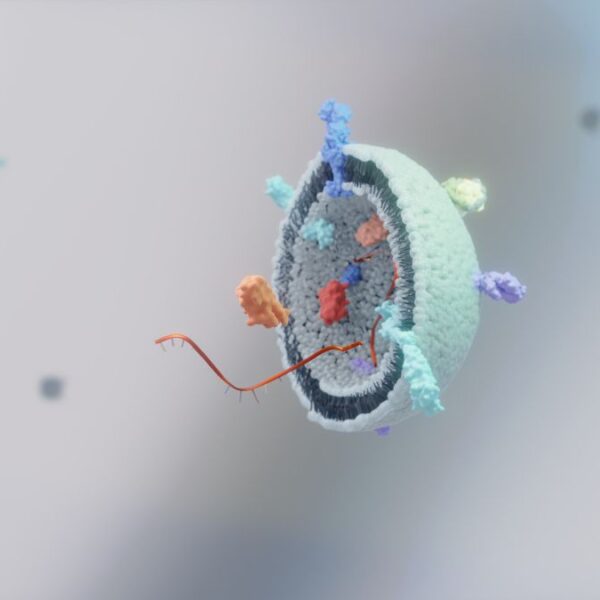sEVs
Small extracellular vesicles (sEVs), the natural candidates for the next generations of biotherapeutics and vaccines
Membrane proteins are essential actors in life, playing a key role in intercellular interactions. As such, they are the targets of most current and future therapies and hold themselves great therapeutic promise. However, their mastery is a challenge for the development of usable therapeutic tools. Over hundreds of millions of years, nature has evolved small extracellular vesicles (sEVs), which carry selected combinations of membrane proteins, as a complex tool for intercellular communication that can be propelled throughout the body. Our advances in the bioengineering of sEVs with any types of proteins have harnessed this potential to develop a new generation of extremely powerful, natural tools for both therapeutic and preventive treatments.

Cell-Cell communication
Multicellular organisms are formed of numerous cell types which must coordinate their behavior to ensure growth, differentiation, tissue and organ formation and development, as well as the physiological equilibrium. This coordination takes place through communication by ligand-receptor interactions, either directly between adjacent cells, or over long distances via biological or chemical molecules. This communication proceeds in two phases: the first involves the generation of soluble molecules or the display of membrane proteins that trigger signal transfer; the second involves the receipt of the signal by membrane molecules in the recipient cell, which then transduce the signal to achieve the function involved.
In recent years, an alternate type of communication has been revealed: long-distance communication via the release of small extracellular vesicles (sEVs) that act like nano-cells. These sEVs can transmit highly complex messages, as they are enveloped, like cells, by a membrane presenting multiple ligands, and possess a cytosol containing numerous proteins and RNAs. Like cells, sEVs can present ligand clusters to trigger specific activation in receptor cells.
Extracellular Vesicle Propelled Protein Activation Cluster, a new paradigm in biotherapy
Mastering this type of complex intercellular communication by bioengineering sEVs with specific protein ligands can offer enormous therapeutic potential. Ciloa has successfully overcome this challenge of sEV bioengineering by developing a robust and unique technology that has been proven in over 100 sEVs displaying the most complex membrane proteins, alone or in clusters, paving the way for unique therapeutic and preventive applications.


